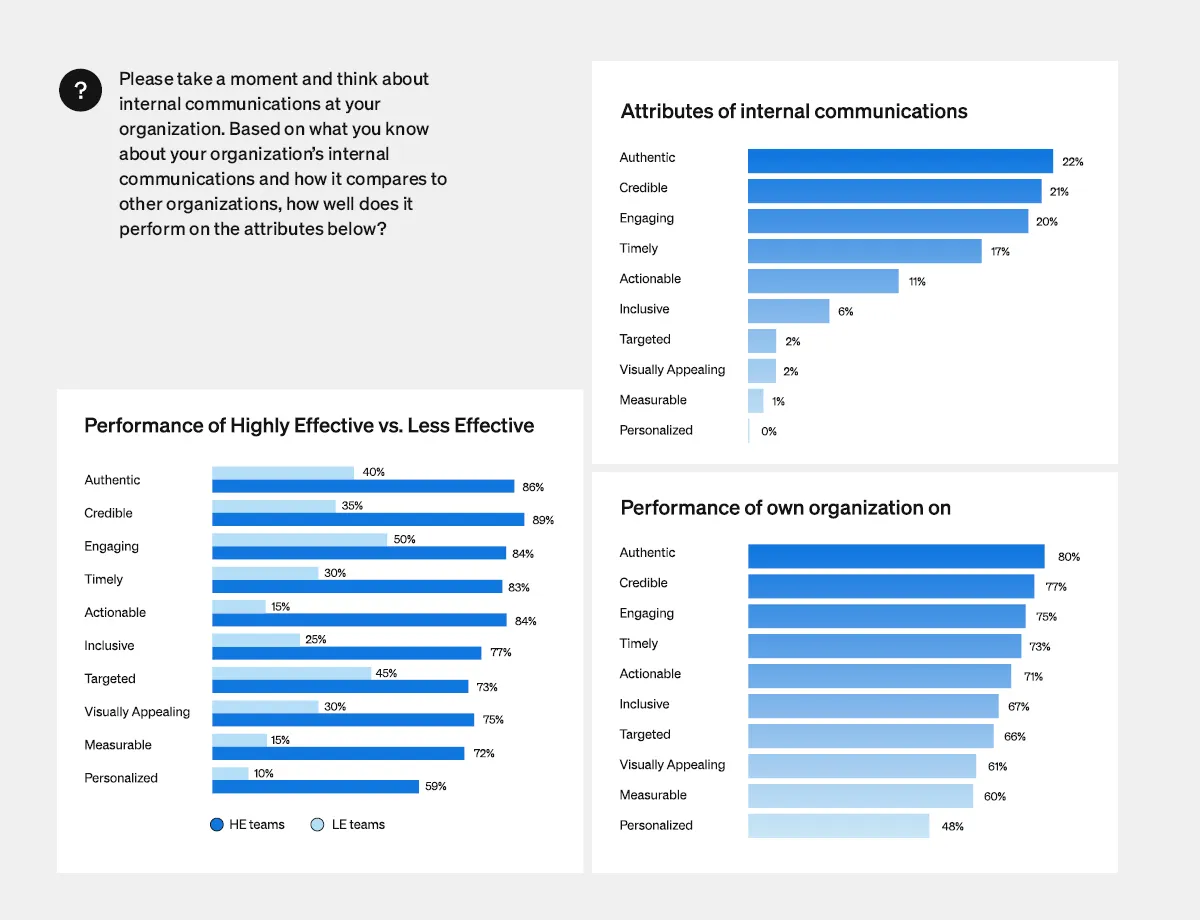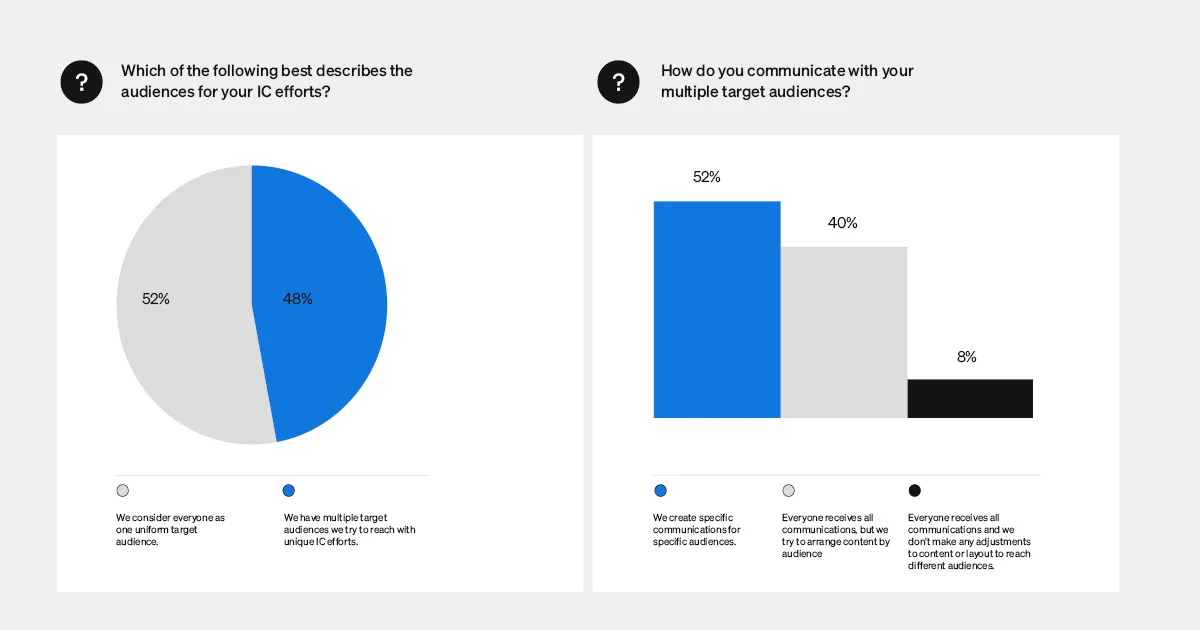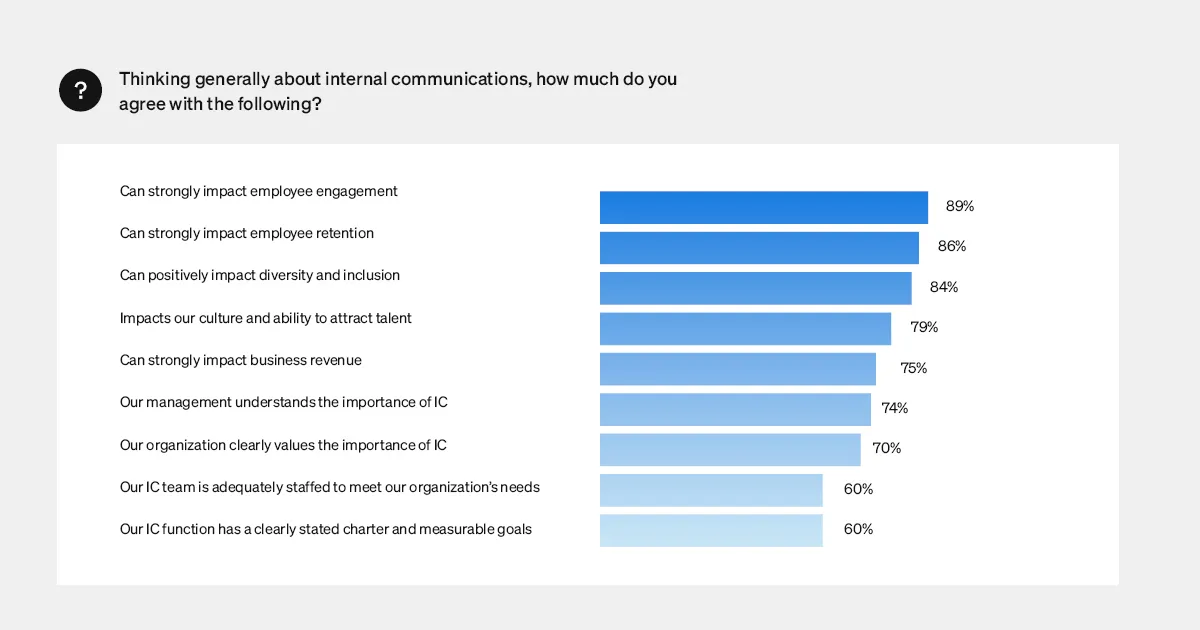Technology is rapidly evolving — and so are many Internal Communication teams, which are leveraging innovations from generative AI to virtual assistance to increase productivity and magnify the impact of their work.
This topic took center stage in a recent discussion with Jordan Katz, Chief Insights Officer at Simpplr, who broke down some thought-provoking takeaways from the 2024 State of Internal Communications report.
To learn more, read on for key takeaways and listen to the full podcast!
IC’s rapid adoption of new technologies is a blueprint for organizational success
Internal Communication teams that strategically use new technologies such as artificial intelligence (AI) are seeing boosts in productivity and internal comms effectiveness despite flat or decreasing headcount.
“Many organizations are seeing a decrease in internal comms headcount, but they’re not feeling overwhelmed,” Jordan says. “As a result of leveraging better tools and technology, and the ability to use AI, there’s no negative effect.”
The data shows that the number of respondents indicating that their team plans to grow this year has not changed, yet significantly more employees report feeling adequately staffed to meet organizational needs (up from 50% in 2022 to 60% in 2023). Without a significant change in anticipated hiring or a vast decrease in the volume of communications, this points to an ability to do more with less.
In fact, one-quarter of those teams that anticipate a cut in staffing indicate the decrease is a direct result of additional AI support/functionality as opposed to budget cuts.

This underscores another important takeaway: The most effective Internal Communication teams lead by example when it comes to adopting leading-edge tech.
“IC is a first adopter or tends to be a rapid adopter of technology, which is great,” Jordan says.
Leadership can use the rollout of AI and other new technologies within IC teams as a blueprint for other departments to leverage innovative tech solutions to increase productivity, operational efficiencies and overall organizational performance.
Check out this guide to optimized AI prompts for internal communications
Authentic, credible and engaging comms are the baseline for effectiveness
When asked to rank the attributes of highly effective internal communications, report respondents bubbled authenticity, credibility and engagement to the top of the list. Jordan notes that these attributes offer IC teams a litmus test for the quality of their communications.
Credibility and authenticity as high-scoring factors signal the deeper need for organizations to prioritize trust-building efforts. Likewise, the importance of engagement underscores the need to create content that captivates as well as informs.
IC teams looking to improve the effectiveness of their communications can use these “table stakes” attributes as their north star trifecta for IC content strategies — a minimum threshold to improve comms effectiveness.

The report notes that IC teams must check these boxes to gain any traction.
This means linking your communications to the priorities of the organization, being honest and forthcoming, and engaging by curating the language and format of your content to the culture of your organization and through the channels that people prefer to utilize.
Explore 17 ways to boost employee engagement
Huge opportunity for more personalization and targeting
One glaring finding from the report was that a significant percentage of IC teams don’t leverage a personalized and targeted internal comms strategy to deliver custom content tailored to employees’ roles, workstreams and preferred channels. More than half of all respondents (52%) reported sending the same messages out to all employees.

“Sending every communication the exact same way to every single person in the organization, does not work as well,” Jordan says. Targeting the right employees with the right message at the right time through the right channel has proven to be much more effective.
There’s a big opportunity for Internal Communication teams to increase their impact by personalizing and targeting their content.
The Simpplr research found that those who target have employees who are more likely to take a desired action and are more likely to remain loyal and engaged. The adoption of AI-powered tools like a comprehensive employee experience platform for personalization and targeting — which enables employees to interact with content in a more meaningful and individualized way — can help close the effectiveness gap between highly effective IC teams and their less effective counterparts.
Learn how to use AI to personalize and target internal communications
Dig deeper into data
There’s a gap between data and its utilization in internal communications strategy. Stressing this key finding from the State of Internal Communications research, Jordan encourages IC teams to measure their efforts to make better strategic decisions. “Forty percent of IC teams just have no ability or no focus on measuring the efficacy of their actions.”

This is vital — both for improving the effectiveness of internal communications and proving the value of IC within the organization. “Measuring and calibrating based on how effective your efforts are, in any role, is critically important,” Jordan emphasizes.
While the report uncovered the current shortcomings of data utilization within many IC teams, it also indicates a huge opportunity for these internal communicators to increase their impact through data-driven internal communications strategies and goal setting.
“It’s about, ‘How do I closely calibrate and curate all of my efforts to have the best impact?’ — and leveraging data to know that,” Jordan says.
Get insights into measuring the ROI of internal communications
Technology is a game-changer — depending on how you use it
If you were to summarize Jordan’s main takeaways from the 2024 State of Internal Communications report, it would be two-pronged:
- Technology is revolutionizing internal communications,
- when used correctly.
Understanding the benefits and application of new technologies like AI has its merit, but to see any results, IC teams need to use this new technology effectively. That includes collecting and measuring data and using it to test new internal communications strategies and deploy more effective techniques (e.g., personalization).
IC teams will make greater progress toward their goals and budget wishlists by focusing on, and measuring, key performance drivers such as leadership engagement, employee experience, personalization, targeting, and varied distribution channels and content formats.
Subscribe to keep learning
Connect with Jordan on LinkedIn, and listen to the full podcast to learn more about the topics above and other important findings from the 2024 State of Internal Communications report. And subscribe to the Cohesion Podcast to hear from other internal comms, HR and IT professionals, providing structured, high-value, quick-hitting strategies and tactics.














